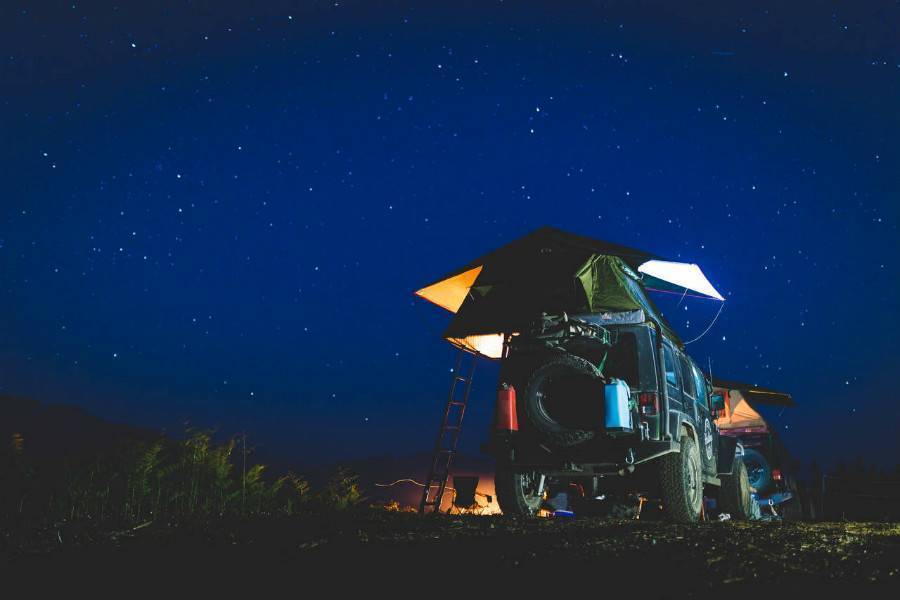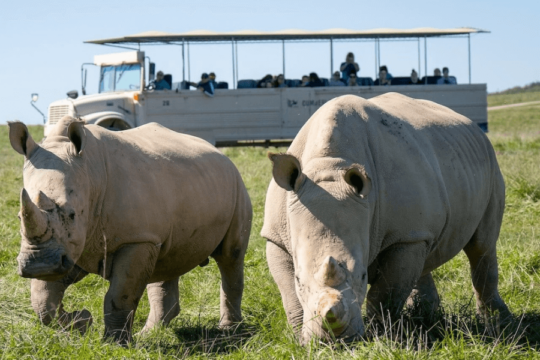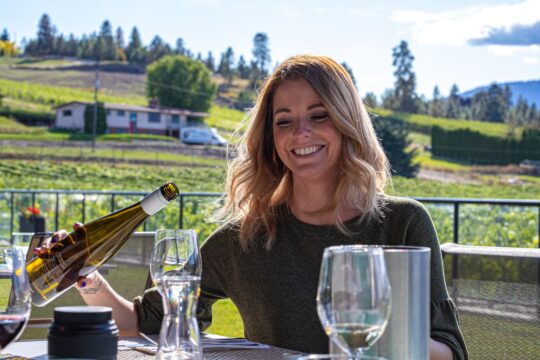For most tour operators, it’s a dream to get featured on a major media publication. Especially when starting out, the national or international visibility can help boost brand awareness, build niche authority, drive referral website traffic and increase organic-search rankings. It’s an incredible way to generate buzz around your business.
While the opportunity may seem out of reach, the reality says otherwise, and Hastings Overland is an excellent example of this. After operating for only a year, the overland adventure company landed an article in the Guardian — a British daily newspaper. How did they manage that? We talked with founder Maxwell Webster to find out.
Hastings Overland gets featured in the Guardian
Aaron Millar, a freelance journalist, first approached Hastings Overland about writing the Guardian article. Since he was already going to British Columbia for another contract, he decided to look for other activities to add to his itinerary and discovered Hastings Overland. Having submitted with the Guardian before, he knew they often published stories on self-drive tours.
Although Webster attributes being “new and shiny” as a reason this opportunity came about, he also points to their successful business launch strategy. From the start, Webster wanted to build a billboard for Hastings Overland that inspired people to come out for the adventure. Part of that involved using professional photography and videography to capture the experience, and another part required growing their online presence.
Let’s dig into that a little more — starting with the beginning:
Starting an all-inclusive overland rental company
Finding a passion
Growing up in a tourism household, Webster had traveled lots, so that was already a passion of his. But it wasn’t until he experienced a few self-drive adventures abroad that he thought about starting an outdoor adventure company.
Similar to a trip he had done in East Africa, he traveled Mongolia by road and stayed in yurts to have a local, authentic experience. From there, he journeyed through Vietnam and India by motorcycle. Compared to other trips and tours he had done in the past, self-driving travel made it feel like he was on an adventure the entire time.

This new-found passion led him to look up this method of travel in other places — including back home in British Columbia. When he found out there wasn’t anything like that offered, he got going on his business idea.
Webster says, “while I was on my trip, I was already writing the business plan. It really had me going; I was super passionate about it. That hasn’t died off. So I think it was a good decision, but essentially it was a travel business born from travel which I think is the way it should start.”
Fulfilling a need
When you think of British Columbia, the great outdoors might be the first thing that comes to mind. With rocky coastlines, sandy beaches, forests, lakes and vast mountain ranges, there’s so much to explore. That’s why Webster was surprised to learn there weren’t any overland rental operations already.
The way he saw it, camper van and RV rental companies would be Hasting Overland’s biggest competitors. If they wanted to set themselves apart, they’d have to do things differently. As such, they decided to be an overland adventure company first, and a vehicle rental company second.
In other words, Hastings Overland had to be all-inclusive to be unique. With a fully-outfitted jeep, a custom road trip plan, and local tour operator recommendations, they could appeal to those looking for an overland adventure but didn’t have the off-roading vehicle, camping equipment, and knowledge of the region.
Generating buzz and launching the business
Partnering with social influencers
Webster’s primary focus was to create captivating content. Hastings Overland had a great product, but to generate buzz and get bookings, they’d have to show what others could discover and experience during the trip. Since many social media influencers are professional content creators, he started by collaborating with them.

One of their first trips had a group of photographers and videographers journey to Banff and back. They asked the social influencers to capture the experience and post a bunch of content on their profiles. Webster says, “having them post on their pages was worth a lot more than us posting beautiful pictures on our accounts — even though we didn’t have a following.”
That’s because there was more potential to boost brand awareness. Social media influencers already have a large community of followers they engage with regularly, and who trust them for advice. By delivering stunning imagery and video to their followers instead, they’d be able to inspire a broader audience to have the same experience.
Running a Facebook contest
It’s true — people tend to go crazy for contests — especially for those that are valued over $500. Because of this, Webster chose to do one for the soft launch of Hastings Overland when it first opened in June 2017.
The Daily Hive Vancouver — an online newspaper — announced the contest with a glowing write-up about Hastings Overland, Vancouver’s first ever overland experience. The rules were clear. Contestants wanting to win a 2-night adventure would have to share the post, tag a friend, like Hasting Overland’s Facebook page, and then comment on the post once that was all complete.
Of course, the contest was a hit for generating buzz. “In our little startup standards, it essentially went viral. It was shared on Facebook around 400-500 times, and we had 1000 followers on Facebook and Instagram overnight,” Webster continues, “that gave us an initial platform to build off of, and a bit of legitimacy as well.”
Working with Destination Marketing Organizations
On top of attaining backlinks on some reputable websites, like publishing a press release on Nuvo magazine, Webster says he also wanted to let Destination Marketing Organizations (DMOs) know about Hastings Overland.
DMOs help to promote local attractions and things to do, as well as give information about accommodation options and transportation services. Hastings Overland checks off all four. So by working with Tourism Vancouver and Destination British Columbia, they could reach visitors who turn to DMOs for any destination guidance and also make connections in the local tourism community.

Note: Hastings Overland worked with Destination British Columbia to create a custom road trip plan that worked for Aaron Millar. Since he was traveling with family for part of it, he needed to be closer to towns and wanted something a little more adventurous for the time he was solo.
Having a professional website
Generating buzz is one thing, it’s another to get those interested to follow through with a booking. That’s where having a well-designed website and professional booking engine comes into play.
Webster says, “I wanted people to be able to see the availability and be able to book if they were in a room with friends, having three glasses of wine each, and they were like ‘let’s go to British Columbia.’ I wanted them to be able to press that button then and there. I think that’s huge.”
Whether someone discovers Hastings Overland from a social media influencer, or finds out about the experience by reading about it in the Guardian, they can go to the website, get more information, and quickly make a booking. And for Webster, that’s what matters big time for a startup — reservations are the most significant metric for tracking success.
Final thoughts
Of course, this opportunity doesn’t come around for every tour brand. But it’s safe to say that Webster’s launch strategy for Hastings Overland positioned themselves in the best way to make it happen.
So if you’re starting your own tour company, or thinking about offering an overland experience in your region, then consider applying the above launch strategies to generate buzz.
“Focus on your product and focus on your promotional items. Build something that’s appealing — the customers and influencers will come.” Webster says.

Take your business to the next level
Online bookings. Flexible pricing. Outstanding support.



